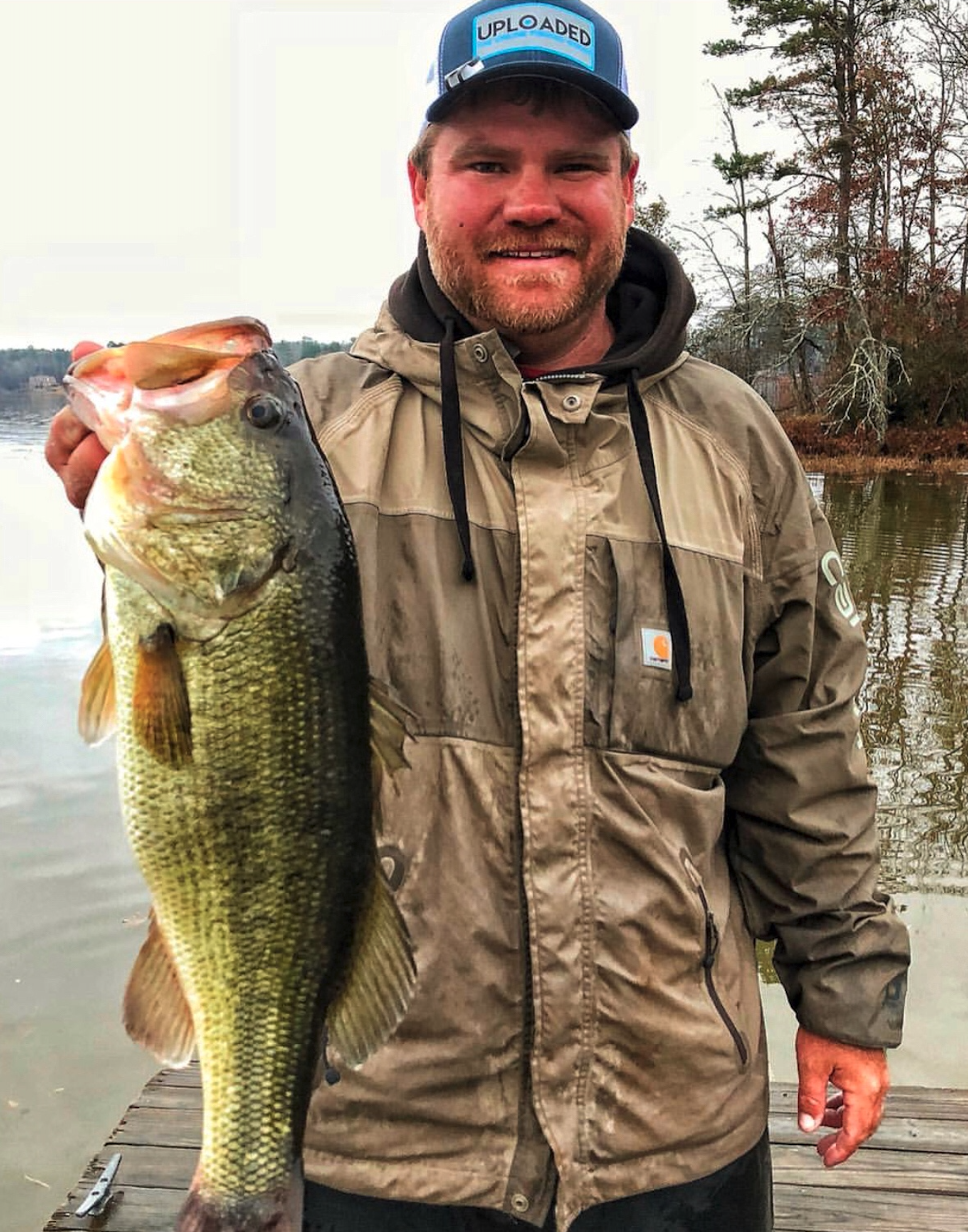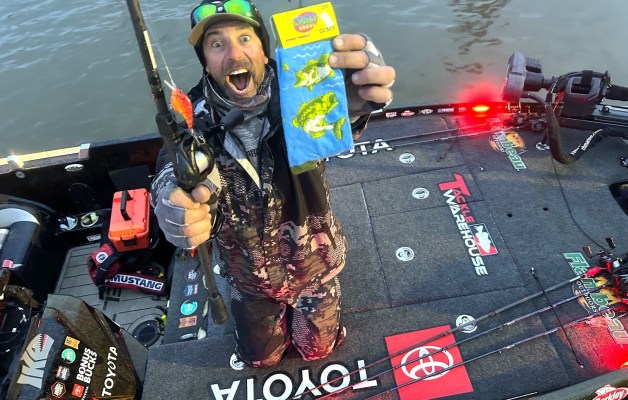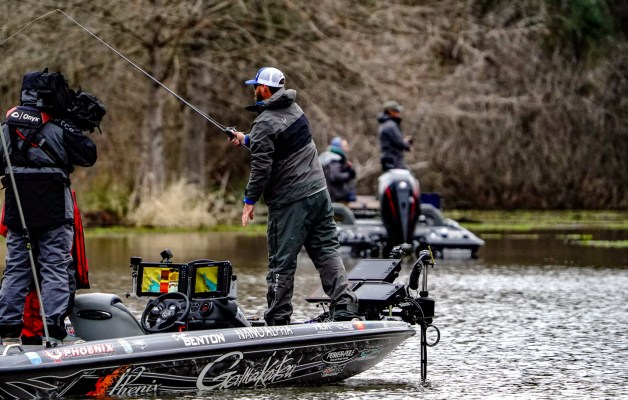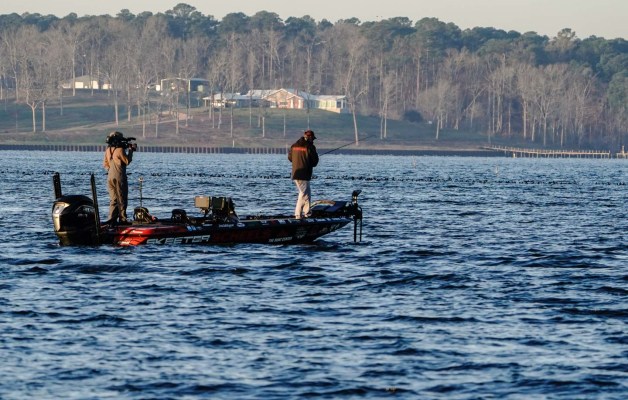
Foward-facing sonar is playing a large roll an Elite Series event again this week, no surprise there. But we’re starting to see the evolution of forward-facing sonar (FFS) become more and more of a factor as opposed to the base technology itself. A primary example of this is Bradon Card crediting Humminbird’s new TargetLock technology for a good bit of his Day 1 success.
Where traditional FFS transducers are mounted on the shaft of the trolling motor, and then turned using the foot control pedal of the trolling motor, the new Humminbird transducer is mounted on a separate shaft entirely. The advantage of this is that anglers can now use Spot-Lock and FFS simultaneously, able to pivot the two shafts independent of one another. So, if an angler hits Spot-Lock, and his trolling motor shaft spins 180- degrees to maintain the boat’s position, his FFS transducer stays pointed in the direction of the bass, bait, brush or other target acquired by the transducer.
Day 1 leader Bradon Card credit (at least in part) his success so far on Lake Oahe to the new TargetLock technology from Humminbird, that not only has a the transducer mounted on a shaft that operates independent of the trolling motor, but also boasts the capability of locking onto a target and pivoting the transducer for the angler as it stays fixed on the acquired target.
With 3- foot waves tossing the boat around, a fight with a ferocious smallmouth on Lake Oahe takes minutes to transpire. The goal of this new technology is for Spot-Lock to keep the boat in the general vicinity while TargetLock aims the transducer at fish or cover until the angler can finish the fight, cull if needed, run back to the front of the boat and resume fishing.
If this tech can truly eliminate the couple of minutes it takes each time to relocate fish (the dozens of times this is currently required throughout the day) we’re going to see another massive jump in the efficiency of our anglers, as forward-facing sonar continues to change the game.





